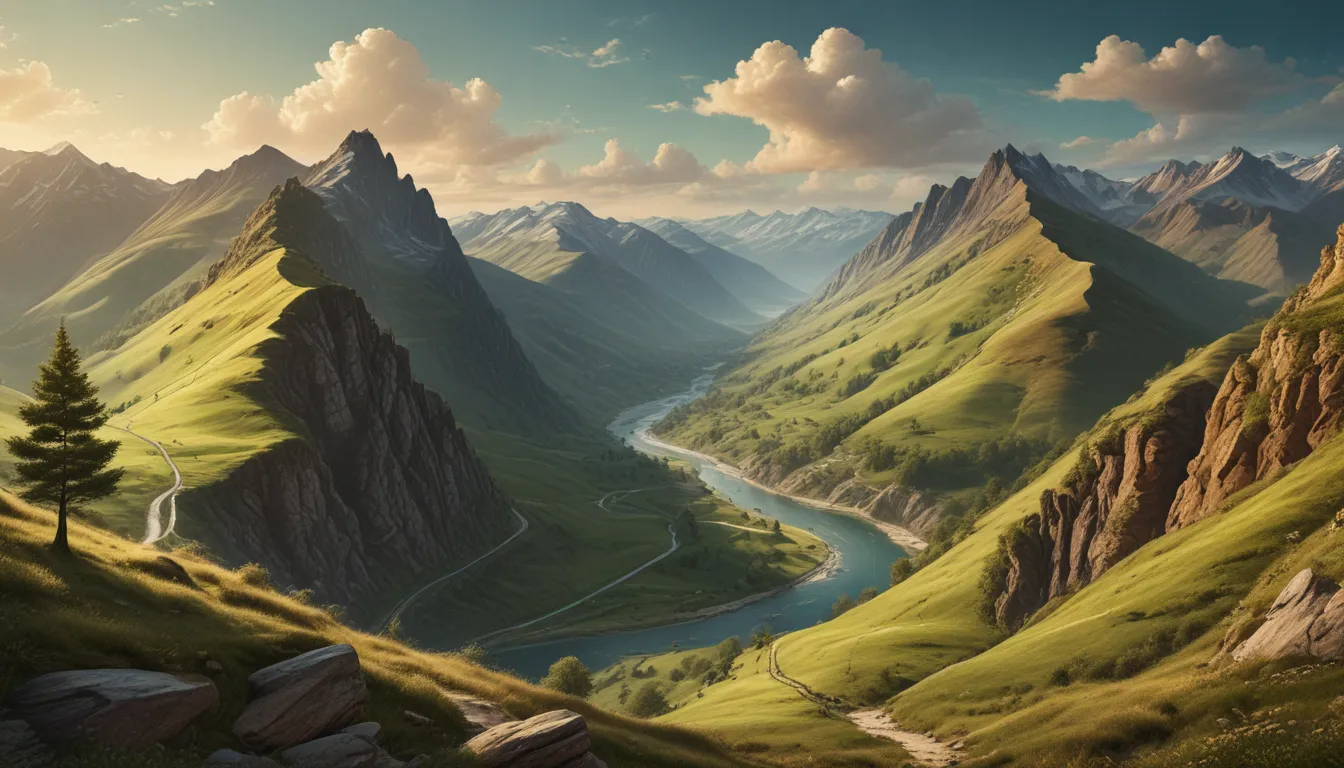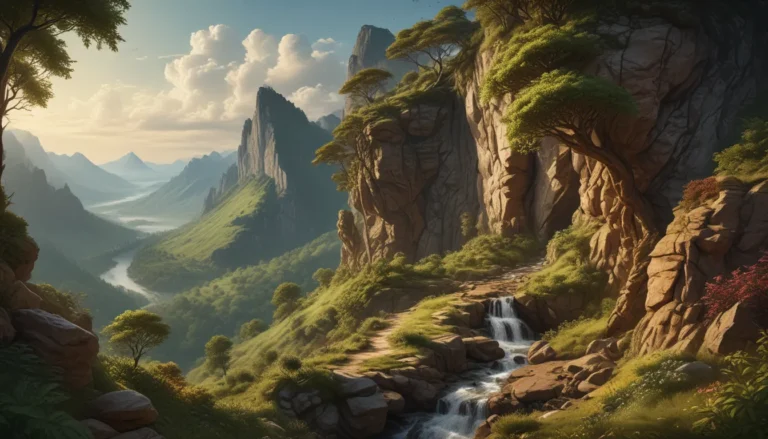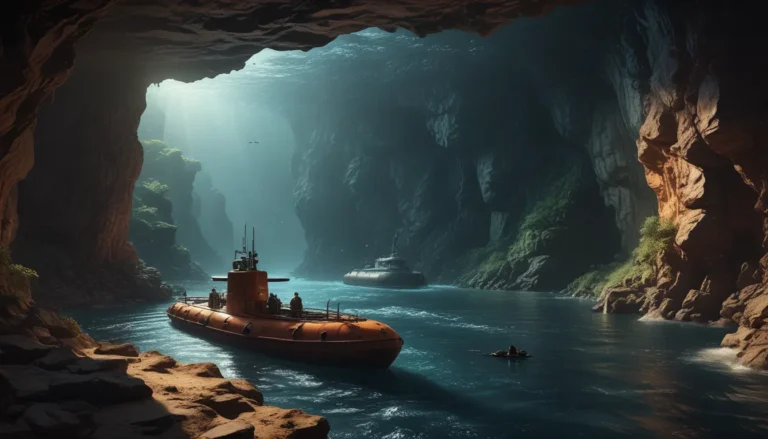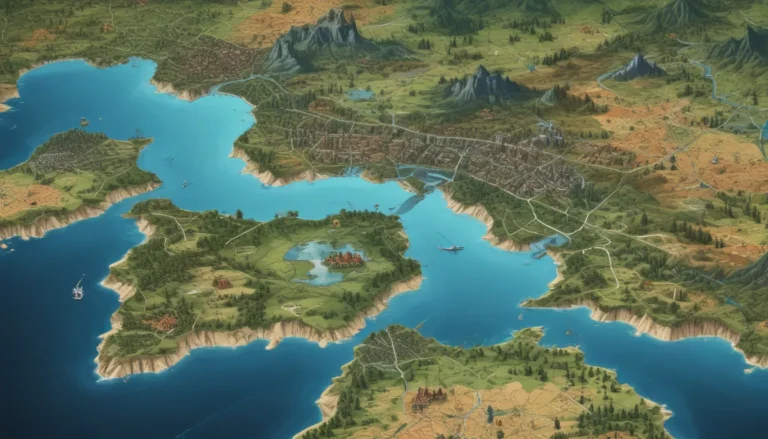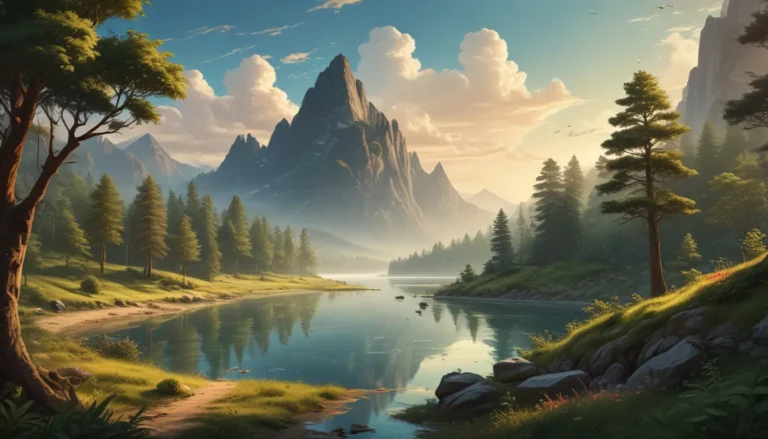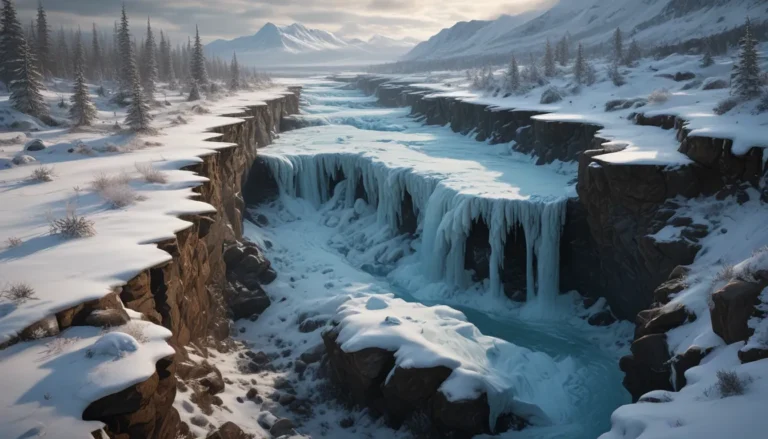A Note About Images: The images used in our articles are for illustration purposes only and may not exactly match the content. They are meant to engage readers, but the text should be relied upon for accurate information.
Are you captivated by the majestic beauty of V-shaped valleys? These stunning natural formations, sculpted through millennia of geological processes, hold a wealth of surprises and mysteries waiting to be uncovered. From their formation to their ecological significance, V-shaped valleys are a treasure trove of awe-inspiring wonders just waiting to be explored.
Delving into the World of V-Shaped Valleys
V-shaped valleys, with their steep walls and distinctive V-like shape, are a sight to behold. Carved out by the relentless forces of nature, these valleys stand as a testament to the power and beauty of geological processes. Let’s embark on a journey to discover eight surprising facts about V-shaped valleys that will leave you in awe of their remarkable nature.
Key Takeaways:
- V-Shaped Valleys, with their breathtaking landscapes, provide essential water sources, support diverse ecosystems, and offer thrilling outdoor adventures for nature enthusiasts and hikers alike.
- These geological wonders showcase the might of natural forces, attract tourists with their picturesque views, and serve as invaluable resources for geographical research, unraveling the Earth’s geological history.
The Formation of V-Shaped Valleys
V-shaped valleys are the result of millions of years of erosion, primarily driven by the flowing waters of rivers. As rivers gradually wear away the surrounding rock and soil, they carve deep channels with steep, V-shaped sides, shaping the landscape into these iconic formations.
A Prominent Feature of Mountainous Regions
Found predominantly in mountainous areas, V-shaped valleys are a prominent feature of rugged landscapes. The rapid flow of water down mountain slopes initiates the erosive process, eventually sculpting the land into the stunning V-shaped valleys we see today.
Diverse Ecosystems Thrive in V-Shaped Valleys
Despite their seemingly harsh environment, V-shaped valleys are home to a wide variety of plant and animal species. The unique microclimates created within these valleys support diverse ecosystems, making them a haven for flora and fauna to flourish.
Embark on Exciting Outdoor Adventures
For outdoor enthusiasts and nature lovers, V-shaped valleys offer endless opportunities for exploration. Hiking and trekking trails winding through these valleys provide a unique chance to immerse yourself in the natural beauty of these geological marvels and experience the magic they hold.
Vital Water Sources for Surrounding Areas
Many rivers and streams originate from V-shaped valleys, serving as crucial water sources for the surrounding regions. The steady flow of water not only sustains ecosystems within the valleys but also provides drinking water and irrigation for nearby human communities.
Testimony to the Mighty Forces of Nature
The formation of V-shaped valleys stands as a powerful reminder of the forces of nature at work. Over centuries, the relentless movement of water has sculpted deep channels, leaving a lasting imprint on the Earth’s surface and showcasing the sheer power of natural processes.
A Spectacular Scenic Marvel
With their towering cliffs, meandering rivers, and breathtaking vistas, V-shaped valleys are a sight to behold. Their grandeur and beauty attract tourists from around the globe, offering unforgettable experiences and stunning photo opportunities that capture the essence of these natural wonders.
Essential Contribution to Geographical Studies
V-shaped valleys are a subject of great interest to geographers and geologists, offering valuable insights into erosion processes, weathering, and the geological history of a region. By studying these landforms, scientists can unravel the Earth’s past and gain a deeper understanding of its dynamic landscapes.
Conclusion: Embracing the Wonders of V-Shaped Valleys
In conclusion, V-shaped valleys are not only visually stunning but also hold significant geological importance. Their formation through erosion and natural forces paints a vivid picture of the Earth’s ever-changing landscape. These eight surprising facts shed light on the formation, ecological significance, and the sheer beauty of V-shaped valleys, inviting us to appreciate and marvel at the intricate processes that have shaped them.
FAQs: Unraveling the Mysteries of V-Shaped Valleys
Q: How are V-shaped valleys formed?
A: V-shaped valleys are formed through a combination of river erosion and weathering processes, as flowing water gradually cuts down into the surrounding landscape, creating the characteristic V shape.
Q: Are V-shaped valleys only found in mountainous regions?
A: While commonly associated with mountainous areas, V-shaped valleys can also be found in hilly terrain and even flat landscapes, primarily driven by the presence of rivers or streams.
Q: What role do V-shaped valleys play in the ecosystem?
A: V-shaped valleys provide vital habitats for a diverse range of plant and animal species, offering ideal conditions for various organisms to thrive and contribute to the biodiversity of the region.
Q: Can V-shaped valleys change over time?
A: Yes, V-shaped valleys undergo changes over time due to ongoing erosion processes, with rivers deepening their channels, altering the valley’s shape, and weathering and sediment deposition shaping the landscape.
Q: Is there significance beyond the aesthetic appeal of V-shaped valleys?
A: V-shaped valleys hold practical importance as well, serving as essential water sources, contributing to flood control, and providing opportunities for outdoor activities such as hiking, camping, and nature exploration.
Unveil the beauty of V-shaped valleys and immerse yourself in the wonders of these geological marvels. Whether you’re a hiking enthusiast, a nature lover, or simply curious about the world around you, V-shaped valleys offer a gateway to exploration and discovery, inviting you to connect with nature in its purest form. Next time you encounter a V-shaped valley, take a moment to appreciate its awe-inspiring beauty and the remarkable processes that have given rise to its existence.
